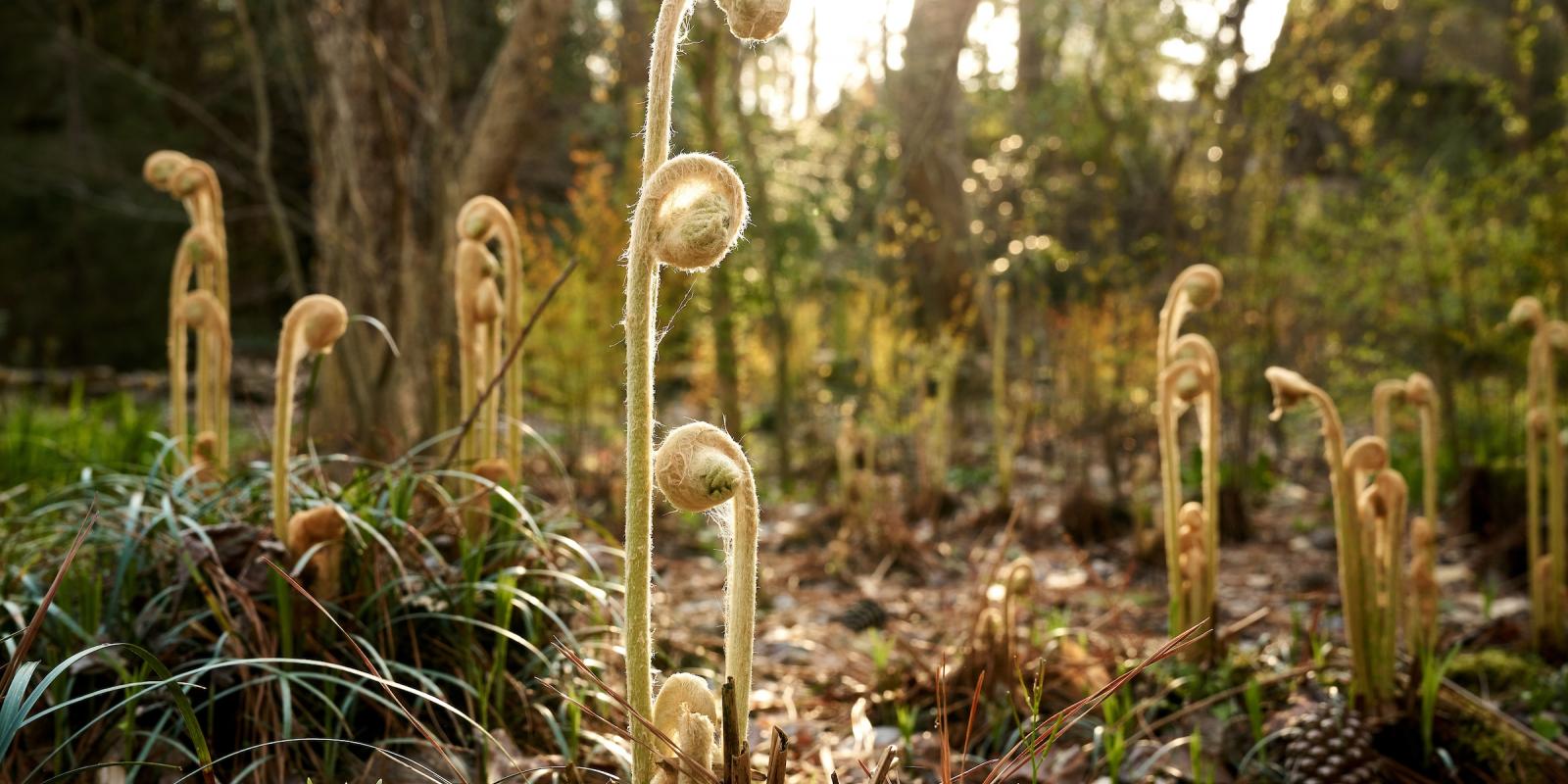

What was once a granite quarry might now be seen as a deep pit that drops off just behind the museum building, but it's so much more! This native garden contains herbal medicinal plants, the mysterious lost camellia, quiet waterfalls, and what is Georgia’s largest native plant collection in one place … 25 feet down.
The Buckhead Branch of Peachtree Creek winds along the southern edge of the quarry pit. Legend has it that a deer buck, drinking water somewhere along the stream, was shot and killed by a local hunter. The buck’s head was mounted on a post at a nearby tavern, giving the local community a name – Buckhead.
Long-forgotten, the quarry was rediscovered in 1972 when the Atlanta History Center completed a survey of the property. It totals 25 feet deep and 3 acres in size. The quarry was mined for rock from the 1880s to about 1920, providing a hard stone used for roadbeds. The crushed rock may still be under Peachtree Street and other streets in Buckhead and the surrounding area.
In the fifty years the quarry was abandoned, native trees sprang from the ground, and quick-growing shrubs and vines created a thick growth. Today, it is a sanctuary for native plants and the wildlife that depends on them.
The Mary Howard Gilbert Memorial Quarry Garden shelters one of the state’s most comprehensive collections of plants native to pre-settlement Georgia, many of which are rare and/or endangered. See plants like the Franklin Tree, discovered on the banks of Georgia’s Altamaha River and now extinct in the wild; the yaupon holly, a signature plant of Southeastern Native Americans; and various species of native azaleas.